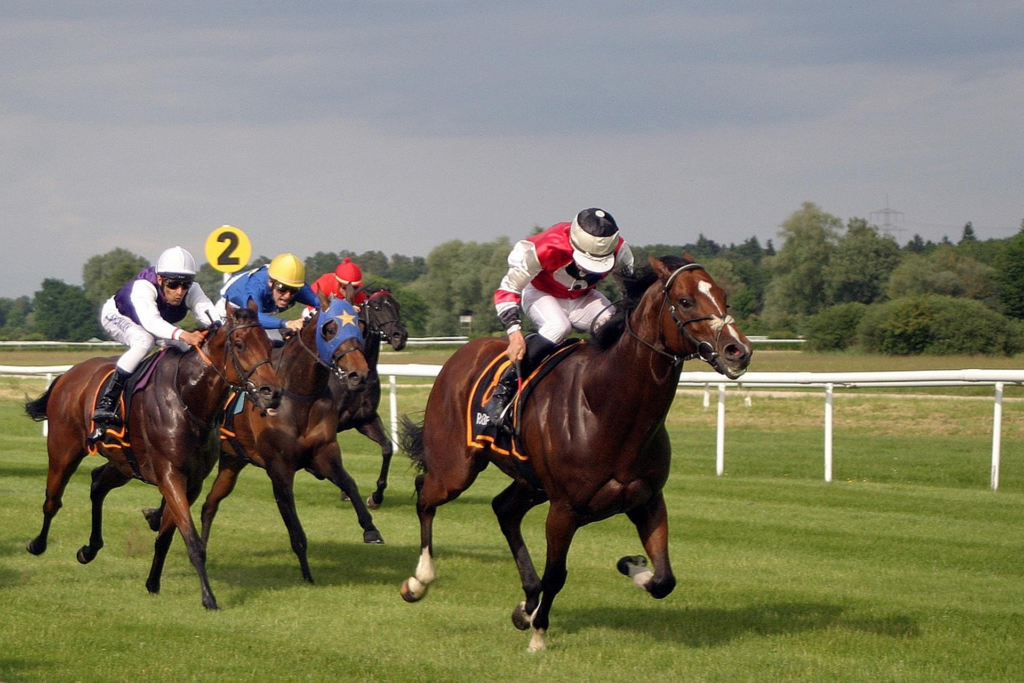In horse racing, odds show how likely a horse is to win and how much money you can earn if it does. In most cases, they appear as numbers like 2/1, 5/2, 6/1, or 10/1, which are called fractional odds. They show how much you win compared to how much you bet. For example, 2/1 means you win $2 for every $1 you bet, while 10/1 means you win $10 for every $1.
Since odds reflect both probability and potential payout, they can greatly help bettors judge which horses offer good value and make more informed choices when placing their daily picks. That’s why understanding and knowing how to read odds is one of the most important skills for anyone making daily horse racing picks.
Reflect the Market’s Opinion
Odds show how the betting public collectively views each horse’s chances of winning. When a horse has low odds, it means many bettors believe it has a strong chance, while high odds indicate a horse that the public is less confident in. This gives daily handicappers a quick snapshot of how competitive the race may be and which horses are attracting support, making it easier to form daily horse racing picks.
Identify Undervalued Opportunities
One of the most important daily strategies is spotting value or “overlays.” An overlay occurs when a horse’s true winning chance is better than what its odds suggest. For example, if bettors believe a horse has a 30% chance of winning but the odds imply only 15%, that horse is undervalued. Conversely, a horse priced shorter than its true chance becomes an overbet risk.
Guide Betting Strategy
Different odds suggest different types of bets. Low-odds horses suit win bets (picking a horse to finish first) and exacta bets (picking the first two finishers in the correct order). This is because their higher chance of finishing near the top makes them more reliable for outcomes that depend on strong performance.
Reveal Live Market Shifts
Odds are not static. They change throughout the day as more money is wagered. Daily bettors watch these movements closely. If odds shorten, it may indicate strong late support from knowledgeable bettors. If odds drift, confidence in that horse may be fading. As a result, late odds movement can reveal hidden information and help bettors adjust their picks right before the race.
Show Risk vs Reward
Picking horses daily means balancing risk and reward. Favorites provide more consistent chances of winning but smaller payoffs, while longshots offer the potential for large payouts despite much lower winning probabilities. Bettors use odds to decide whether they want safer, more frequent returns or are willing to take bigger risks for larger rewards.
Spot Overhyped Favorites
Not every favorite should actually be favored. Sometimes horses are overbet due to hype, popular connections, or misleading past performances. These “false favorites” are prime opportunities for bettors to look elsewhere in the field. Spotting weak favorites allows handicappers to back horses with better value and higher profit potential in daily racing.
Reveal Public Bias
The public is predictable in certain ways and tends to overemphasize recent winners, big-name trainers, or popular jockeys. This leads to horses being overbet without strong reasoning. Bettors who understand these biases can take advantage by focusing on horses the public tends to overlook, often finding stronger value in the process.
Provide Early Betting Insight
Before betting begins, tracks publish morning-line odds that predict how the public will likely bet. These early odds help handicappers identify projected favorites, possible overlays, and horses that may become overbet later. Comparing morning-line odds to live odds throughout the day also provides insight into where the money is going and why.
Impact Multi-Race Bets
Multi-race bets are wagers where you try to pick the winners of several races in a row. Odds help bettors decide when to rely on one strong favorite as a “single” to keep the ticket affordable. When many horses in a race have similar odds, it usually means the race is hard to predict, so adding more horses makes sense. Higher-odds longshots can also be included to boost the payout if they happen to win.
Help Understand Race Shape
Odds can offer clues about how a race may unfold. For instance, if several low-odds horses are known for early speed, the race may develop a fast pace that benefits closers. If a single speed horse is heavily favored, it may indicate a potential wire-to-wire victory. Odds help bettors piece together pace scenarios and predict strategic race dynamics.
Inform Exotic Bet Structure
Exotic bets like exactas, trifectas, and superfectas depend heavily on odds to determine the most logical combinations. Favorites often anchor the top of exotic tickets, while mid-priced or longshot horses are positioned underneath to increase value. Understanding how odds shape the payout potential helps bettors build smarter, more profitable daily exotic tickets.
Estimate Fair Probability
To pick winners effectively, bettors convert odds into implied winning percentages. For example, 4/1 odds translate to roughly a 20% chance of winning. Handicappers compare this market probability to their own estimated probability. When a bettor believes a horse’s chances are higher than the odds imply, that horse becomes a strong daily pick.
Bringing It All Together for Better Daily Picks
Understanding odds is essential for anyone who wants to make confident and informed daily horse racing picks. Odds help bettors recognize value, assess risk, and choose the most suitable betting strategies for each race. They also reveal important clues through market movement, show when the public may be overreacting, and highlight which horses are more reliable than others.
Nonetheless, always remember that odds guide your decisions but never guarantee a win, so treat them as tools rather than certainties. Use odds to inform your thinking, not control it, and always back them up with solid research, form analysis, and good betting judgment.

